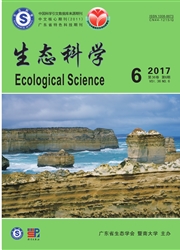

 中文摘要:
中文摘要:
在3S技术的支持下,通过遥感解译获取南岭国家级自然保护区乳阳片区的森林景观数据,并建立了该区域数字高程模型(DEM),提取了海拔、坡度、坡向等地形因子。在Arc GIS9.3软件中进行叠加分析,探讨了研究区森林景观空间分布与地形因子(坡度、坡向)的相关关系,尝试找出其空间分布趋势。结果表明:阔叶林种对于环境的适应性是最好的,在各级坡度和坡向上均有较大范围、较为均衡的分布;针叶林、山顶阔叶矮林、采伐迹地趋向于聚集分布;针叶林景观多分布在阳坡和半阳坡,山地草甸景观倾向于分布在阴坡,人类干扰所形成的各个景观类型倾向于平坡和缓坡分布。
 英文摘要:
英文摘要:
The forest landscape resource data and the digital elevation model (DEM) of Ruyang District, Nanling National Nature Reserve were acquired with 3S technology and remote sensing interpretation, while the landform factors such as elevation, gradient and exposure were extracted as well. Overlay analysis adopted in ArcGIS 9.3 was used to explored the relationship of forest landscape resource spatial distribution and landform factors (gradient and exposure), and to find out its spatial distribution trend. The results show that the adaptability of broad leaved forest which distributes on different gradients and exposures in large-scale is the best; aciculisilvae, peak broad leaved brushwood and cut-over area distribute collectively; aciculisilvae landscape is mainly on the sunny and semi-sunny slope; mountain meadow landscape is prone to shady slope; other landscapes affected by human being are on flat and gentle slope.
 同期刊论文项目
同期刊论文项目
 同项目期刊论文
同项目期刊论文
 期刊信息
期刊信息
